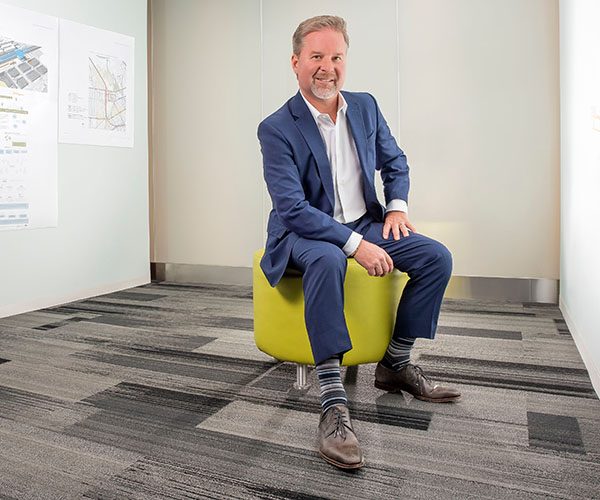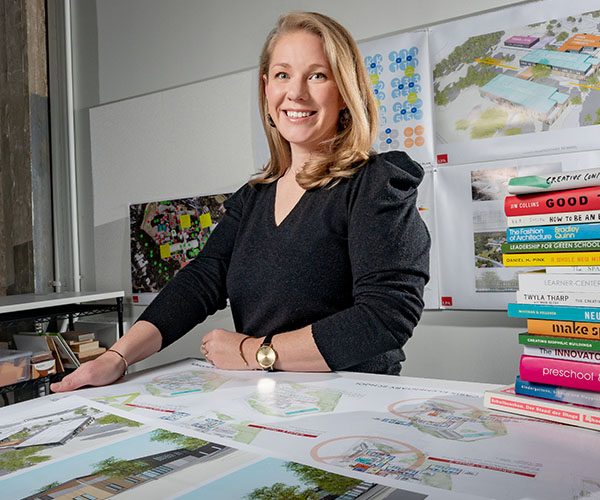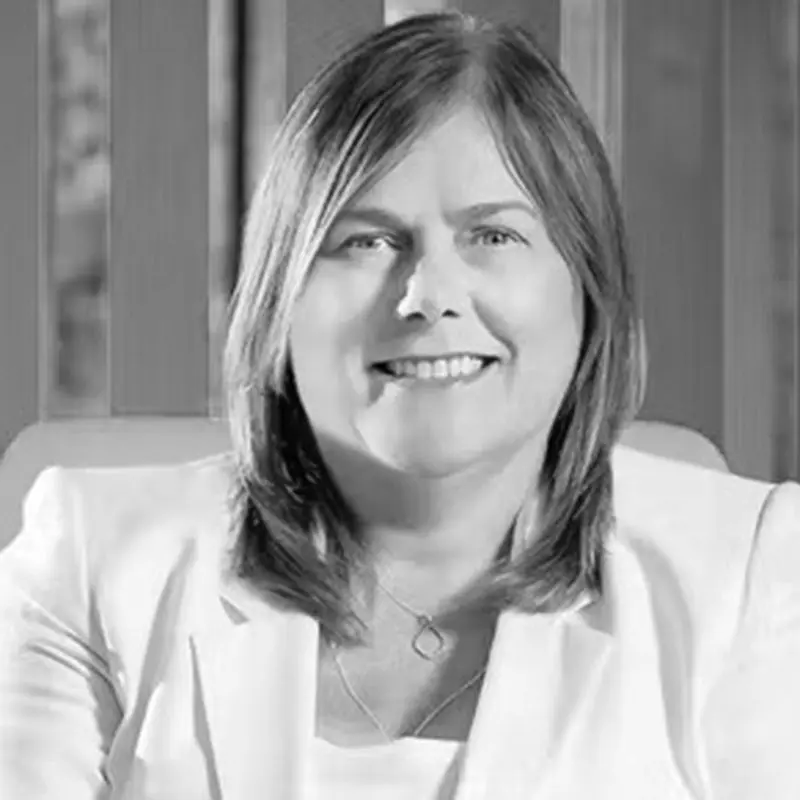Shaping Futures
by Wendy Rogers
CEO and CTO, LPA, Inc.
May 25, 2022
LPA CEO Wendy Rogers shares proven practices for preserving firm leadership
I’m a Gen Xer. Often overlooked between baby boomers and millennials, we are a generation that revels in associating itself with “The Breakfast Club” and Tears for Fears rather than the Beatles and disco. Today, as a Gen Xer, I’m transitioning my company from boomers to the next generation — a responsibility I don’t take lightly.
Over the last few years, we’ve seen an entire generation of architecture firms unprepared for succession. With no new leadership in place, they either sold out or closed their doors. Too many great firms lost their way.
LPA was founded in 1965 and remains a proudly independent, integrated design firm. Through wars, economic crashes and a global pandemic, the firm has survived and grown. The transition from one generation to the next is part of our legacy. The responsibility for firm transition must be taken seriously, especially now, with so many boomers ready to retire. In the last five years, we have had eight partners retire, with an additional five ready to follow.
My own experience provided an important guide map for my approach to preparing the next generation. I was promoted to principal almost 30 years ago at a hole-in-the-wall deli across from our office. The only thing I really remember about that moment, other than the location, is that I’d never had lunch with both our CEO and president at the same time before. During the meal, they shared that I needed to learn everything about K-12 school design in case my managing partner was hit by a bus. Reflecting, I realize now this was early succession planning.
By the time I became CEO in 2017, we had grown into a firm that valued mentorship and actively worked to support rising talent. Leadership wanted to ensure the expertise in our firm was owned by more than one person and leveraged across the company. We are a firm that believes in identifying our future leaders and understanding how to make their transitions as seamless as possible.
Earlier this year, we elevated Kate Mraw, who started with the firm 18 years ago, to director of our K-12 educational design, overseeing our 37-year-old national practice. She replaced Jim Kisel, who led the practice for 28 years and kept a firm hand on the reins. Despite his grasp, Jim had the foresight and saw the wisdom in promoting Kate’s deep talent and knowledge. In recent years, we made conscious decisions to provide Kate with additional coaching and expand her role across the firm. She helped influence many of the practice’s most innovative projects, including the recently opened TIDE Academy, a three-story STEAM high school in Menlo Park, California. This transition has also been seamless and represents a step forward for the practice as Kate’s leadership motivates and inspires our teams and clients.
 Jim Kisel, Principal, Former Director of K-12, LPA
Jim Kisel, Principal, Former Director of K-12, LPAImage courtesy LPA
 Kate Mraw, Principal, Director of K-12, LPA
Kate Mraw, Principal, Director of K-12, LPAImage courtesy LPA
As we approach the next round of retirements, I can rest assured that we have developed and executed thoroughly considered plans for each instance. We’ve invested in training. Our approach has been allowed to evolve, adapt and develop over 10 years. Despite our success in the transition process, we have learned some lessons along the way.
To share them, here are a few recommendations for others facing leadership transitions:
- Think (way) ahead.
Assess potential candidates for future roles early to understand their competencies and where development may be needed — and then invest in them! While some of this process sounds prescribed, I’ve found that it invited individuals into deeper conversation about their roles, the firm, the business and the profession. - Promote mentoring.
Boomers (and subsequent generations) must assume the responsibility to prepare their successor before retiring. Be a pain in the ass: Make them … and recognize that some will be incapable or unwilling to take on the role. - Conduct executive leadership training for your associates.
Targeted candidates who flourish, grow and become inspired by the engagement and opportunity are your next owners. The others will still benefit by being better professionals for the experience. - Be direct and ask your partners for their retirement timelines.
While some will resist and throw that line back at you about best-laid plans, I’ve found most become introspective, welcome the inquiry and collaborate in helpful ways. They’re glad you care. -
Document the agreement in a letter of understanding.
Documenting the plan records the vision and renders it shareable, accessible and captures intent. It never hurts. - Define a time frame.
We have found that four-year plans work well. In such tangible time frames, leaders stay super engaged while investing in their successors. Many reduce their hours 10–15% in the last year as their day-to-day responsibilities are well-taken care of by their successors. Take advantage of this “extra time” and have them share their knowledge with your emerging professionals! Best investment ever. - Life happens and surprises occur.
If the majority of your transitions go as planned, it’s easier to accommodate the outliers.
I am fortunate to work with a group of partners who want to leave LPA better than we found it. Our firm believes developing diverse talent is essential to our commitment to achieve better results on every project and budget. We treat succession and individual promotion as a responsibility, not a bureaucratic chore. We share the belief that planning for succession and mentoring the next generation is a fundamental part of the vision of our firm.
Wendy Rogers, FAIA, LEED AP is CEO and chief talent officer of LPA Design Studios, an integrated design firm dedicated to creating innovative environments that work better, do more with less and change people’s lives. Wendy leads a team of more than 400 architects, engineers, landscape architects and interior designers in California and Texas. The firm embraces an inclusive and collaborative approach to create sustainable, timeless and resilient designs for corporate, educational, healthcare, recreation and municipal projects. LPA was honored as the American Institute of Architects (AIA) California’s 2021 Firm of the Year. Wendy started her career as an intern at LPA and was named CEO in 2017. As CEO, she handles the day-to-day firm operations, with a special focus on increasing the role of LPA’s proprietary research unit, LPAred, and expanding LPA’s unique informed design approach. As chief talent officer, she is also responsible for developing firm culture and lifestyle to retain and attract people who want to grow and make a difference in the built environment. Wendy is a vocal advocate for sustainable design and the importance of using research to support design strategies and has made energy performance a core firm value. For two years in a row, LPA was largest firm in the country to surpass the AIA 2030 Commitment, which establishes annual targets for reducing energy in projects. She is a regular speaker at events advocating for designs that respond to the environment and user needs. A graduate of California Polytechnic State University in Pomona, California, Wendy is a LEED Accredited Professional and a fellow of the AIA.


